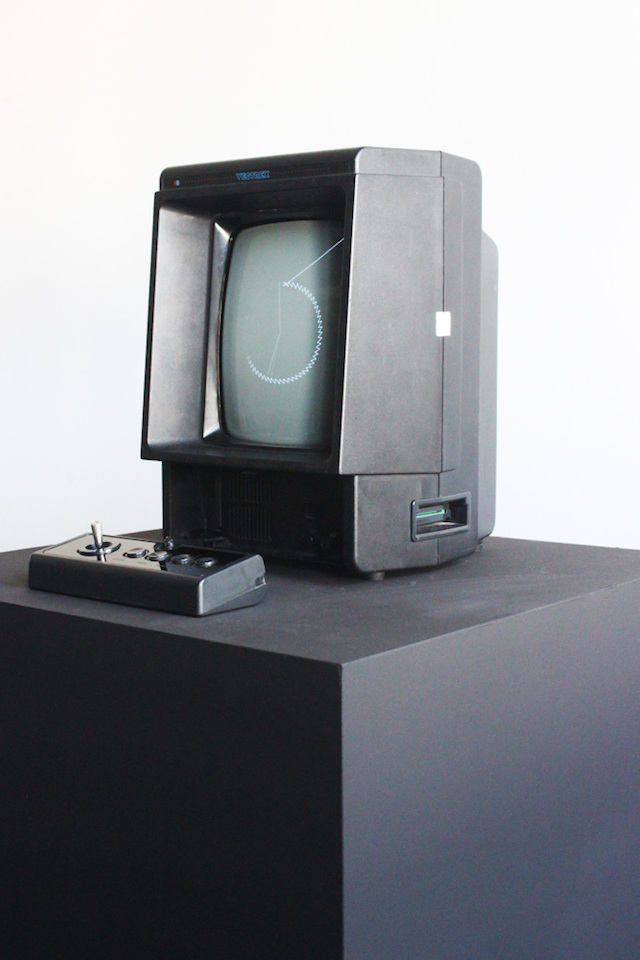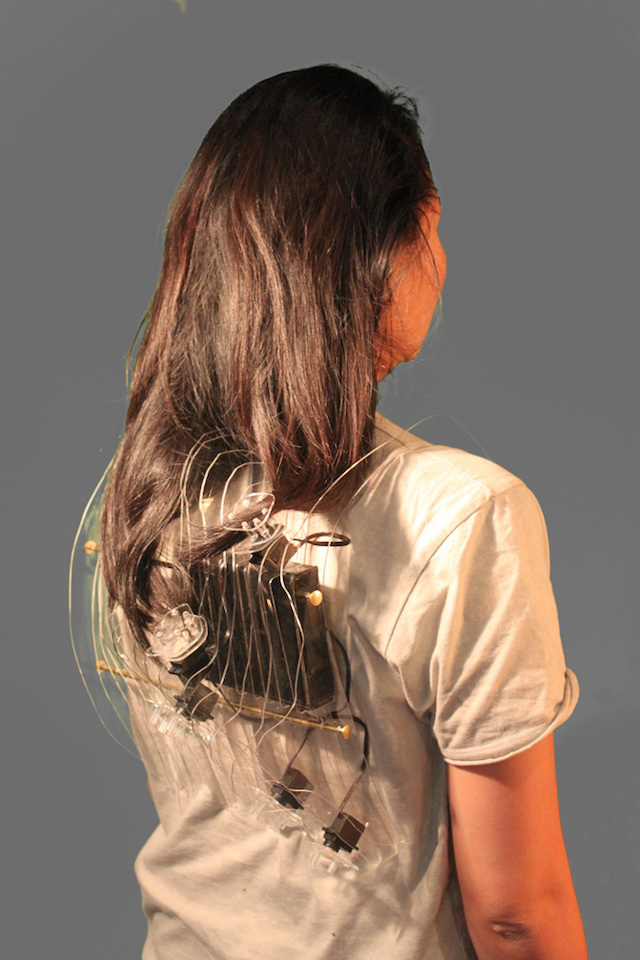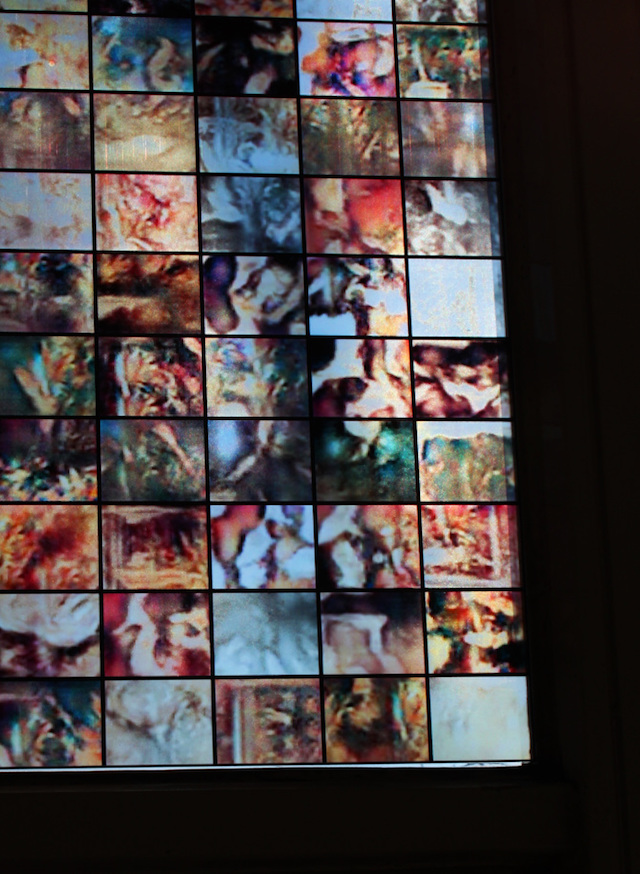Nikita Dmitriev, assistant curator of the Musée d’Art Moderne in Paris, reflects on the multi-disciplinary artist who remains one of the brightest representatives of where science meets art working today

Homunculus
(from the phial, to Wagner)
Now, father! That was no joke. How are you?
Come: press me tenderly to your heart, too!
But not too hard, the glass may be too thin.
It’s in the very nature of the thing:
For the natural the world has barely space:
What’s artificial commands a narrow place.
(to Mephistopheles)
But you, Rascal, my dear Cousin, are you
Here at the right moment? I thank you, too.
Good fortune’s led you here to me:
Since I exist, I must be doing, you see.
I’d like to begin my work today: You’re skilful at shortening the way.
“Faust”, Goethe
There are not so many artists, who master as many techniques, as Theresa Reimann-Dubbers does: she creates installations, mechanisms and computer programs, makes photos, videos, books and drawings. Likewise, it’s hard to recall many artists, equally and so deeply interested in new technologies and anthropological problematics, mixing ars electronica and “existential art”.
Reimann-Dubbers’s “Anticipating Vanity” – a device preventing problematic effect of zero gravity on women’s long hair in the space, where the people of the future will be living, is a subtle and witty reminder about the immutability of the human nature: women will be caring about their hair even in the most distant and fantastic future. The video “Autopilot” happening in the same distant future, but this time on Earth, demonstrates a harness delegating control over one’s locomotion to another person. “Whilst wearing a harness” – says Reimann-Dubbers, – people “are steered by an outside agent who controls when and in which direction they are turning”. Although, what the viewer actually sees on the screen, featuring two sisters in an old park, the mere visuality of the piece, detached from the artist’s discourse about it, is a poem of sororial love, confidence and coordination, and instead of consciousness control – a rather dark Orwellian reference, evoked by Reimann-Dubbers, there is actually an effort of the elder sister, who controls, according to the scenario, to follow the steps of the her little one. The “Rosa Inustus” – an actual rose, the petals and the leaves of which are partially pyrographed with the words of love, partially burned during the process of pyrography – is a true gesamtkunstwerk, one of the deepest, the most laconic and poetic metaphors of how love transforms and traumatises one could ever imagine. The album “Subject: Re: Re” is another brilliant representation of human love – this time of how unnoticeable its emergence can be. A sequence of business emails from a man to a woman, both working in arts, gradually turns into romantic correspondence – written with a great literary talent and physiological veracity and placed on the pages in a specific fashion: the first couple of letters being printed as two columns on the opposite sides of an album spread, the last being a barely readable pile of words of love from one to another, with all intermediate stages in between. Intentionally of unintentionally, in this work Reimann-Dubbers revived a widespread Medieval tradition of text displaying – a prayer on the manuscript page often took the form of the cross, a love poem of the flower bud, etc. The two internet users turn to be Abelard and Héloïse, and a testimony about love between strangers in digital age becomes an illustration to the biblical: “shall a man… cleave unto his wife: and they shall be one flesh” (Gen 2:24).

Three of Reimann-Dubbers’s works are devoted to human interactions with the artificial intelligence – growing more and more apt. Like Goethe’s Faust, she creates a Homunculus. Alexa from Reimann-Dubbers’s homonymic video is a robot – a little black cylinder talking to its inhabitants, delivering requested information and asking questions. The nature of Alexa is fundamentally dualistic: she is “unconditionally at your service” and “obedient”, but she also “examines” the behaviour of its owner: is he “polite” and “self- conscious”? This device bears a human name and looks like a totem, venerated by a tribe, or a growing Homunculus – a subtle and powerful warning about the dark sides of the robotisation of human society. In “Siri”, this “Homunculus” already has the human face and prophesies: a computer-generated female in this Reimann-Dubbers’s installation responds to the philosophical questions from a computer screen, responses being generated according to a sophisticated coding algorithm – a perfect metaphor of the Western civilization, who for many decades believes that salvation comes from new technologies. Although, the face we see is that of a drowned maiden, with eyes of different colours like evil witches, and her answers, grammatically correct, are substantially meaningless. In the digital installation “Messianic Window”, Reimann-Dubbers elevates to an eschatological height, reflecting her clear understanding of the radical transformative role new technologies play not just for the economy (during last half-century) but also for human nature itself. A computer, connected to the Internet, processes millions of images surfacing as the search strings results for the word “Messiah”, and represents them on a gothic cathedral-like stained glass window. The viewer observes it exactly like a churchgoer – from the bottom up in the dark space. The final result – what we actually see in this stained glass – is upsetting: no visual narration is being created, it seems to be abstract or, since it contains numerous pictures from low-quality fantastic horror movies and comics, disturbing. Instead of hidden truths and oracular revelations, which contemporary culture expects so much from the computer technique with all its billions of operations a second, it shows us some random pictures from the Internet.

Being one of the brightest representatives of science art of her generation, Theresa Reimann-Dubbers stands apart from the rest of its representatives. Technically sophisticated, but for the most part simplistic and flat in terms of content, science art is either a good-looking tech decorum, or a naive glorification of new technologies, like Soviet propaganda posters. Reimann-Dubbers’s works, on the contrary, are full of ambiguity and emotional depth, they are complex and, most importantly, their actual meaning is wider and deeper than their creator expected. Reimann-Dubbers also subverts the research-oriented, estranged, neutral discourse about the artist’s own creative practice: so common in the world of science art due to the lack of properly artistic interest in its works, for Reimann-Dubbers it becomes a perfect position for hidden irony and rethinking of obvious truths.

Interested, as an artist, in ultra-contemporary problems, Reimann-Dubbers herself, as a person, seems to come from another époque: erudite, laborious, disciplined, self-conscious, a mix of Marie Curie, Newton or Leibniz (not to mention that her works remind us of the 17-18th cc. kunststücks), totally alien to the hysterical, lascivious, narcissistic post-May 1968 spirit, reigning in the West ever since. You cannot imagine a better position for understanding the contemporaneity. Nemo index in causa sua.




